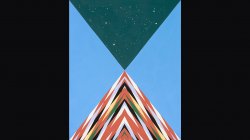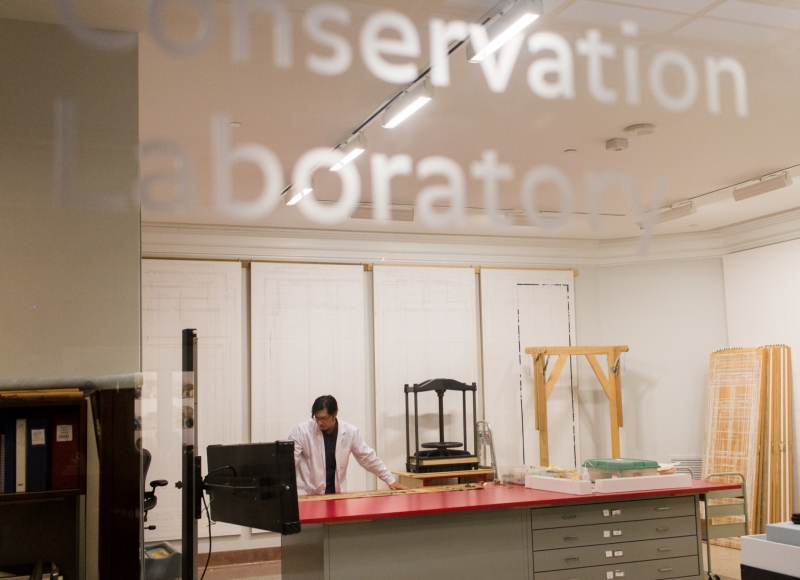Prints, drawings, and watercolor paintings on paper, whether Western or Asian in origin, share several requirements for their care and conservation. Among the major threats to works on paper are careless handling, exposure to unstable materials, overexposure to light, and moisture.
Unmatted works of art on paper must be handled with special care. Handle only with clean cotton, latex or nitrile gloves, as even the slightest amount of natural oil from one’s skin can leave a mark on the paper surface. When moving an artwork, even very short distances, place it on a stiff acid-free board or in the fold of a large sheet of acid-free paper and carry it flat, to avoid accidental creasing or wrinkling.
Make certain that all materials touching the surface of the paper, on the back as well as the front, are acid-free. If your print, drawing, or photograph was framed prior to the 1980s, it may be glued or taped to ordinary cardboard: both the cardboard and the glue or tape are extremely harmful to paper. Never, ever, use newsprint to wrap a work of art on paper or silk: it is so acidic that it will disintegrate paper and silk fibers in a short time period. Seek professional assistance to have cardboard and tapes removed and replaced with archival materials. If you have any question about the materials used to frame your artworks, we recommend that you consult a professional framer in your area.
As an organic material, paper is highly sensitive to light, which will, in time, cause it to become dark and brittle. This discoloration is irreversible, but some degree of flexibility can be restored to the paper through careful conservation treatment. To prevent light damage to works on paper displayed in the home, hang artworks where they are not exposed to bright natural or artificial light, ideally on a north-facing wall or in a hallway. If possible, rotate artworks so that no single work is on display constantly. A convenient way to do this is to change the display with the seasons.
Another enemy of paper is moisture: water and mold can cause greenish-brown stains or warping, or cause ink or pigments to smear. In the home, works of art on paper should be stored in watertight containers and kept well away from damp floors or walls. These containers are also effective against mice and insects, which find both the paper and paste used in Asian paintings quite delicious. Conservation treatment can reverse or diminish the effects of water damage.


